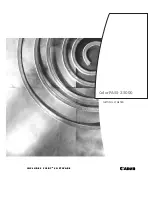
UMN:CLI
User Manual
V8102
98
5.6.3
Assigning IPv6 Address
IPv6 is designed as an evolutionary step from IPv4. IPv6 runs well on high performance
networks like Gigabit Ethernet, ATM, and others, as well as low bandwidth networks.
The main changes from IPv4 to IPv6 are summarized as follows:
•
Expanded addressing capability and auto configuration mechanism
IPv6 128bits address size solves the problem of the limited address space of IPv4
and offers a deeper addressing hierarchy and simpler configuration.
•
Simplification of the header format
The IPv6 header has a fixed length of 40 bytes. It actually accommodates only an 8-
byte header plus two 16-byte IP address (source and destination address). The
packets can be handled faster with lower processing costs.
•
Improved support for extensions and options
With IPv6, the options are handled as Extension headers. Extension headers are op-
tional and only inserted between the IPv6 header and the payload, if necessary. For-
warding IPv6 packets is much more efficient than IPv4.
IPv6 Header
Version
Traffic Class
Flow Label
Payload Length
Next Header
Hop Limit
Source Address
Destination Address
Extension Header information
Next Header
Fig. 5.2
Structure of IPv6 Header
32 bits
40 octets
Variable
length
















































